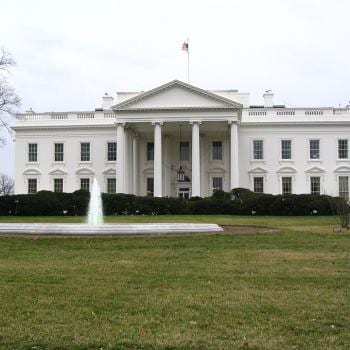Between the Council of Ephesus and the Council of III Constantinople, there was a significant development of Christological doctrine. Terminology became more precise, causing the meaning of different theological words to change over time. St Cyril of Alexandria’s correct but loose “one incarnate nature,” was orthodox, but only if one understood his definition of “nature” or “phusis.” After Chalcedon, where the distinction between “phusis” and “hypostasis” had become clearer, one could no longer say “one incarnate nature” without it meaning something quite different from St Cyril’s definition, but the critics of Chalcedon read the words of St Cyril with the new, developed meaning of “phusis” or nature after Chalcedon. They did this to reject Chalcedon, claiming the council was in error because it had rejected orthodox Christological tradition. They did not understand how they were reading the writings of Cyril anachronistically. Both sides of the debate had changed and developed. Yet, one side was more understanding of the significance of linguistic change and was capable of reading and interpreting the past properly, so they could see the true meaning of the less-sophisticated terminology and show its accord with the newer, more nuanced insight of later doctrine. The other was stuck in their present while misreading the past, incapable of understanding why developed meanings must not be placed upon texts written into the past. They were tied to specific words, the letter of the law as it was read in their time, instead of the meaning, while the Church always is interested in the meaning and its proper presentation, and never completely tied to the words if the words no longer signified the same meanings.
This problem is a common one when people are trying to understand what the Church teaches. Often there is an apparent contradiction in the way the Church teaches with the way it taught in the past. We need only look to the controversy around the filioque to see how divisive this can be. While it is important to look to tradition, for it shows where we come from and the record of our theological development, one who does so must always be careful to read it properly, understanding the development and not misreading the past. One must read the past in accord with the Church, not as a way to fight against the Church. This does not mean one cannot or should not look to the past as a means of understanding the present and even questioning the present; when this is done, however, it should be done for the sake of elaboration rather than contradiction (a good example of this in history would be Neo-Chalcedonian thought, which reengaged the thought of St Cyril and Ephesus with Chalcedon, to make sure the two coincide and neither side betrayed the other).
Now why do I bring this up here? Because it is a reminder to everyone that we should listen to and follow the Church even if we think the Church today is contradicting the Church in the past. Traditionism has always had the problem of misunderstanding the past; it is a response to the internal development of the Church by reacting to it, reacting in a way that they do not understand either the meaning of the Church’s word in the past, the meaning of the Church’s word in the present, or both. Nor do they really appreciate the way of the Fathers and Doctors and Popes they quote. For theology is always an active engagement with tradition, consistently developing and never final; it is living; it always works to reinterpret the Apostolic tradition so it can be properly understood in its present circumstance. The Fathers and Doctors of the Church understood this (as can be seen how they applied this truth to their own writings). Meyendorff explains this well, “…dead traditionalism cannot be truly traditional. It is an essential characteristic of patristic theology that it was able to face the challenges of its own time while remaining consistent with the original apostolic Orthodox faith. Thus simply to repeatwhat the Fathers said is to be unfaithful to their spirit and to the intention embodied in their theology,” John Meyendorff, Living Tradition(Crestwood, NY: St Vladimir’s Seminary Press, 1978),7.
This is why, when people bring up texts from the past about what was allowed in issues of war or the death penalty, without understanding the context of those writings (i.e., other texts which contradict their interpretations of the texts they use) or the fact that theological questions have been asked recently which had not yet been examined in those times, they demonstrate they do not understand what it means to follow tradition. The Church has always been pro-life. She has always seen that all life is a divine gift. That all human people are made in the image and likeness of God, making their life of intrinsic value which cannot be or should not be snuffed out. Ancient writers were concerned with abortion, but they were also concerned with other issues of life. Reading the ante-Nicenes and their debates with the pagan rulers of Rome will make this very clear. But what united each issue was not always seen or understood, and some aspects of life were treated more clearly and succinctly than others. This did not mean the Church was not pro-life, but it had not been challenged to look at life as a theological and moral doctrine of its own – until modern times. The challenge of the great world wars, eugenics, and the rise of a culture of death has caused the Church to look to life in a new, more sophisticated manner. This does not mean it is contradicting its past, rather, it means it is taking the pro-life seeds of the past and clarifying them, and even recognizing the failure she has had, in her own part, to live out its proper heritage. It also understands that the new world situation we live in also limits the needs of extreme measures, so that she can, in the past, defend more extreme measures (as dispensations) than she can in the present when they are not needed. She is more aware of what life is, its dignity, and our ability to follow it today, and as such, requires more of us, not in contradiction with the past, but in complete accordance with her traditional theological anthropology.











